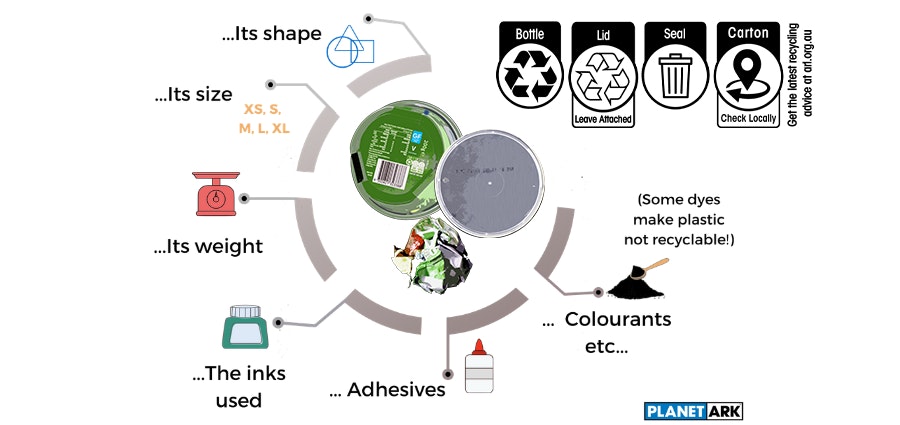Recycling 101: Why does size matter for recycling?
A question we received recently: My council accepts number 2 plastics, so why are number 2 plastic milk bottle tops not included?
Recycling can be contradictory, adding to the confusion we all face. Most often, there is a big difference between a material's technical recyclability and whether it is accepted in curbside recycling collections.
Why? Recycling is designed for the bulk of consumer waste - not all waste.
There are often exceptions, as many factors influence whether something is recyclable or not. We love this handy illustration from Planet Ark.

While recycling systems, tools, and equipment are getting smarter and more efficient, the sorting facilities our recycling goes to manage tonnes of recyclables on any given day - even more so over holiday periods.
Therefore, the systems and processes are designed to sort and dispense the most common materials with a viable market—not every piece of recyclable material that’s collected.
Every sorting centre, also known as a Material Recovery Facility (MRF), differs in what they collect and how they sort it. However, it's usually a mixture of mechanical, automated and manual sorting.
Too Small
General advice is that items should be bigger than 50mm; a good frame of reference is something bigger than an EFTPOS card. Anything smaller will likely fall off the mechanical sorters or be too small to be identified by the cameras.
Too Big
Conversely, containers should be 4 litres or smaller. Anything bigger than this will be too large for the mechanical sorters. Items around your house likely include large protein powder containers or metal homewares.
Method’s bins are a good example of how size impacts recyclability. Our bins are made from Polypropylene, #5 plastic, collected across Australia and New Zealand. However, you can’t simply pop them in the bin at the back of your building. They are too big for the sorting facilities to process, so we collect them and organise the recycling directly with local recyclers.
Can I leave the lid on?
This may leave you asking - if the bottle and lid are the same type of plastic can I leave the lid on?
This depends on your waste collector, some ask for lids to be left on, others request for them to be taken off. It depends on what the materials are going to be used for - most bottles and lids are different colours and if you mix the coloured materials with clear it reduces the number of ways the materials can be used.
What about Container Deposit Schemes?
What is included in a container deposit/ return program is decided on different criteria. Often the balance of maximising recycling rates while reducing litter in an economical way. Single-serve drink bottles, cans, beer bottles and wine bottles are most often found littered but are easily and economically recyclable.
So what do I do with the lids then?
For items that are the wrong size, there are often custom collection programmes, for example, a lot of charities collect metal bottle caps or milk bottle lids are often collected at the dump or eco stores. If you find you produce a lot of these items it might be worth collecting them and dropping them off.
Do you have more recycling questions? Send us an email here.